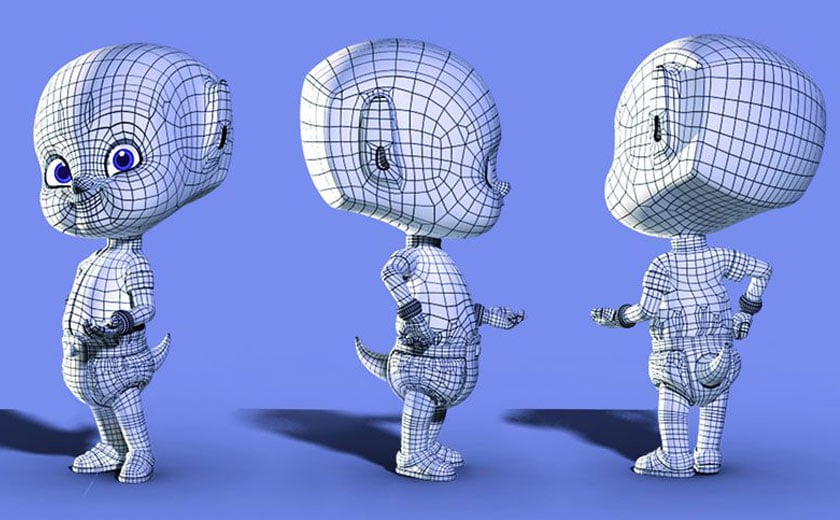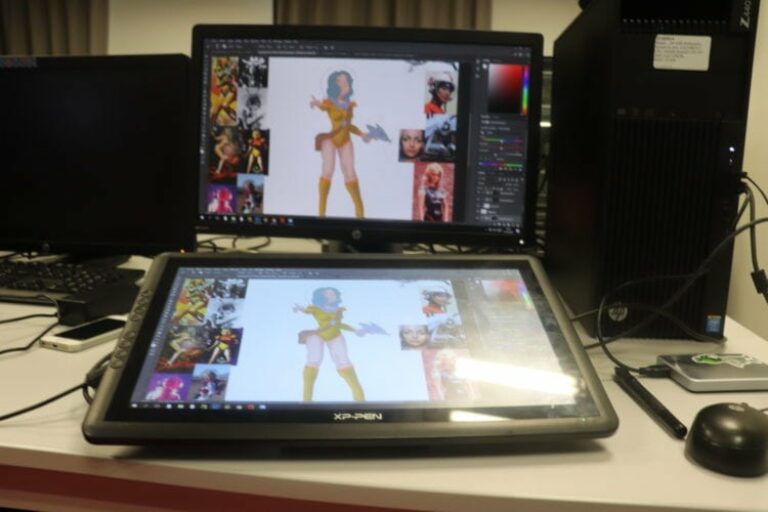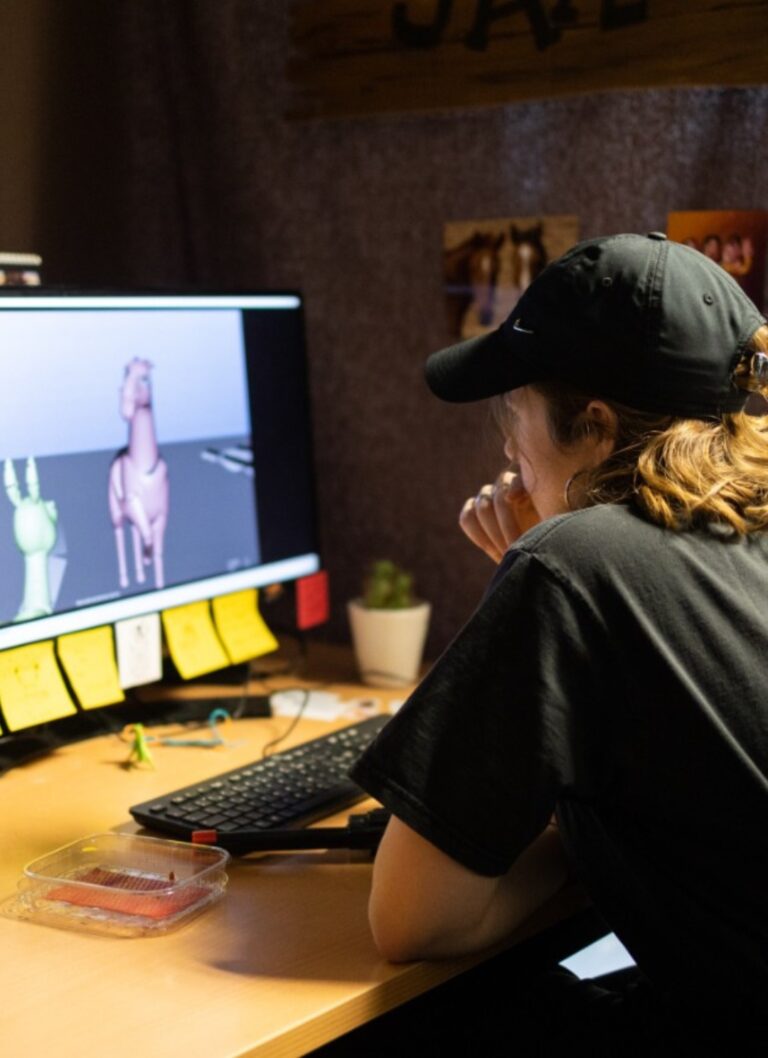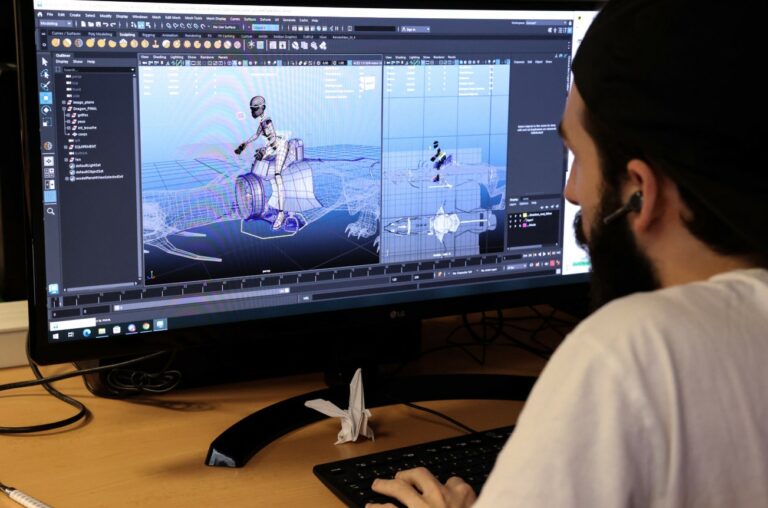
- Training 3D Animation & FX
A 3D animator brings digital objects, environments, and characters to life through movement.
So how do you actually become a 3D animator? Let’s walk through what the job involves, what skills you’ll need, and how to kick-start your career whether you’re heading to school or going the self-taught route.
What does a 3D Animator do?
Their work is both technical and artistic. You’ll be responsible for:
- Creating believable motion and emotion in characters
- Timing animations to voiceovers or sound effects
- Collaborating with modelers, riggers, and lighting artists
- Tweaking and refining until the movement feels just right
- Executing precise animations that align with the vision of an artistic director or the project’s director.
3D animators often work in teams at animation studios, video game companies, film production houses, and ad agencies. Many also freelance or work remotely, especially for indie projects and startups.
Skills you yeed to become a 3D Animator
To succeed as a 3D animator, you’ll need a solid mix of soft and hard skills.
Artistic skills
- Understanding of movement, weight, and timing
- Storytelling ability and visual creativity
- Good eye for detail, pacing, and body language
Technical skills
- Familiarity with 3D animation principles (keyframes, splines, rigging)
- Ability to work with complex software
- Understanding rendering, lighting, and scene composition
You don’t have to master every artistic technique or become a programming wizard, but being well rounded gives you a serious advantage.
Tools and software used in 3D Animation
Every animator has their favorite tools, but most studios look for proficiency in industry standard software. Some of the most commonly used include:
- Autodesk Maya – a staple in film and gaming animation
- Blender – free, open-source, and growing rapidly in popularity
- Cinema 4D – great for motion graphics and commercial work
- Houdini – used for effects-heavy animation (explosions, particles, fluids)
- Unreal Engine / Unity – increasingly used in real-time animation and games
Start with one and build your confidence, then explore others as needed.
Do you need a degree to become a 3d Animator?
Good news there’s no one “correct” path to becoming a 3D animator. You can go the traditional route, or teach yourself with online courses and practice.
Formal Education
Many animators pursue degrees in:
- 3D animation
- Visual effects
- Game design
- Digital media
Specialized schools like ESMA offer hands-on, project-based learning in their 3D animation and VFX programs that mirrors real industry workflows—a huge advantage when building your portfolio.
Self Taught Route
Plenty of animators break in by:
- Taking online courses (YouTube, Udemy, CG Spectrum, etc.)
- Practicing daily
- Building a demo reel
- Participating in animation challenges or forums
The key is to learn by doing ,nothing beats actual project experience.
7 Steps to Become a 3D Animator
Here’s a straightforward roadmap to help guide your journey:
- 1. Learn the basics – Study animation principles (like squash and stretch, anticipation, and timing).
- 2. Choose your software – Start with Blender or Maya and get comfortable animating simple objects.
- 3. Practice consistently – Animate every day, even short loops (walk cycles, bouncing balls).
- 4. Build a portfolio – Create a showreel with your best 20–60 seconds of animation work.
- 5. Get feedback – Join animation communities or mentorship programs to refine your craft.
- 6. Apply for internships or freelance gigs – Start small and grow your experience.
- 7. Stay current – Follow studios, artists, and trends to keep improving.
Career opportunities
3D animators have a wide range of career options depending on their specialization:
- Character animator – Focuses on lifelike or stylized character movement
- Motion graphics designer – Works in advertising and digital content
- Game animator – Creates fluid motion for gameplay and cutscenes
- VFX Artist – Handles effects like smoke, fire, explosions, and crowd sims
How much does a 3d Animator earn avaragely?
- Entry-level: $40,000 – $60,000 USD/year
- Mid-level: $60,000 – $80,000
- Senior: $90,000 – $120,000+
Conclusion
Becoming a 3D animator is challenging but completely doable. Whether you’re starting fresh or switching careers, the tools and knowledge are more accessible than ever.





